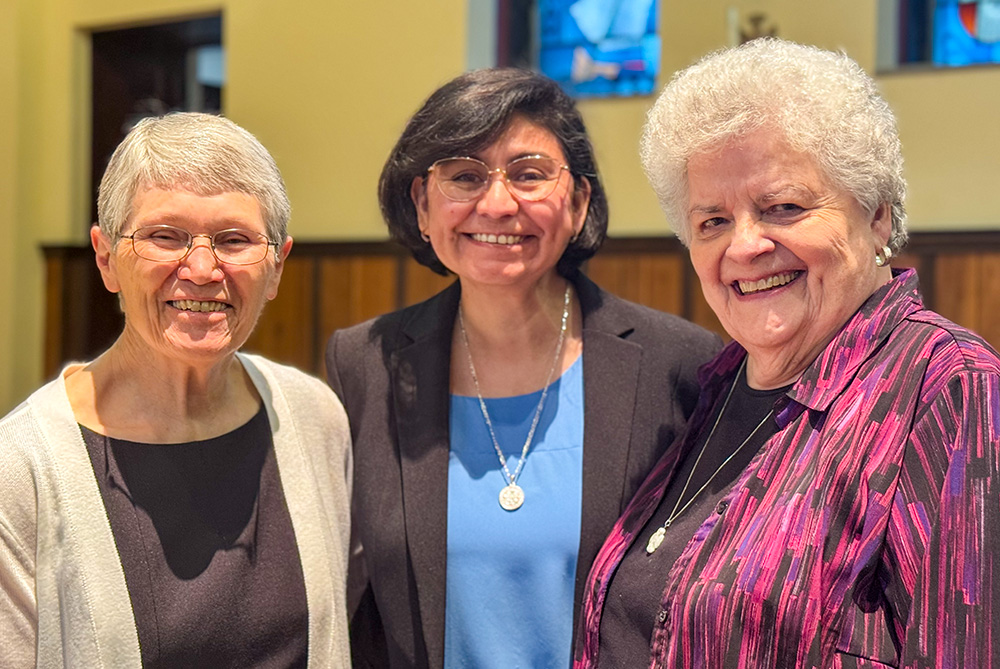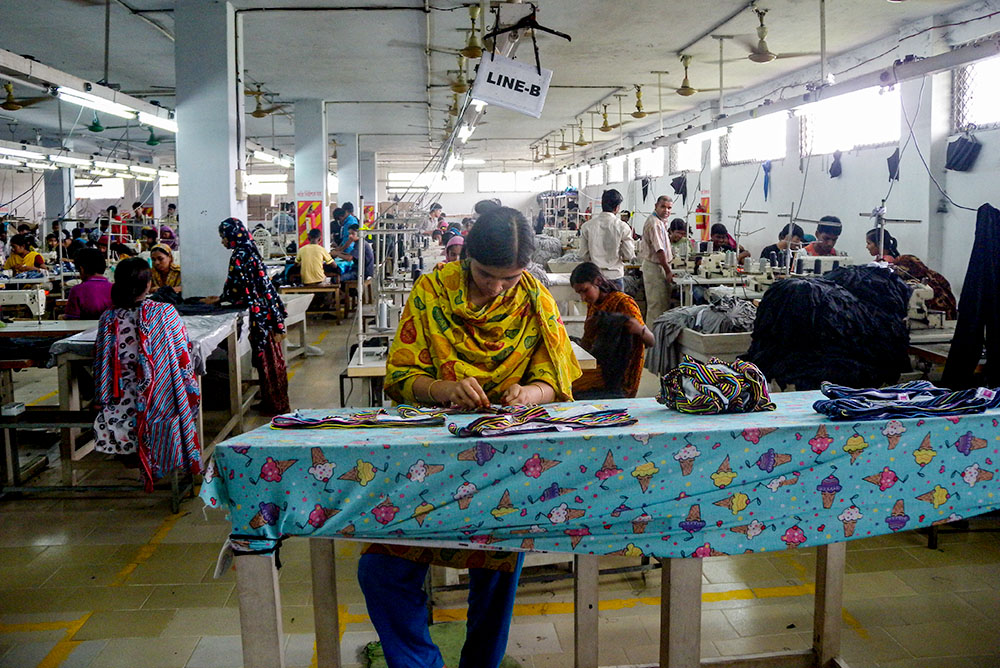
From left: Benedictine Srs. Helen Mueting, Helga Leija and Esther Fangman on the day of Leija's profession of vows. Leija wore a brand new suit found among the donations at the "R" store. (Courtesy of Helga Leija)
People are often surprised to learn that I am a Benedictine monastic because I do not wear a traditional habit. The assumption is understandable, as monastic life has long been associated with distinctive robes. In our monastery, however, we have chosen to dress in modern, simple clothing, grounded in the spirit of St. Benedict. For us, the focus is not on the garment itself, but on the spirit of simplicity and communal living that it represents.
One of my favorite places in the monastery is a small room in the basement near the industrial laundry area. It's not fancy, but it is always neat and organized. We call it the "R" store, and it's where we keep gently used clothing donated by sisters or friends.
When a sister needs something, be it a warm sweater, a pair of shoes, or a skirt for a special liturgy, she comes here first to "buy" and she can pay with a prayer. More often than not, sisters find what they need here.
The choice to reuse, repair and share clothing is a practice that aligns deeply with the values of St. Benedict's Rule. In Chapter 55, Benedict gives clear instructions on the clothing of monks: "The clothing provided should be suitable to the climate and locality."
Benedict is characteristically brief, practical and considerate. Clothing for him is not a matter of status or self-expression. Benedict insists that what we wear should be suitable to the place and the season: warm enough in winter, light enough in summer, and "such as are common to the locality." Nothing flashy, nothing excessive. Nothing to draw attention to ourselves.
Advertisement
But what's most striking to me is the spirit behind these instructions: There is to be no murmuring, no entitlement and no personal ownership. Clothes, like everything in the monastery, are given to us by the community, and cared for by the community. Benedict writes, "Let those who receive the clothing not complain about its color or coarseness, but accept what is given them."
That's a hard teaching in a world like ours. We're surrounded by messages that tell us to express ourselves through what we wear, to consume constantly, to follow trends.
The fast fashion industry thrives on this impulse. It churns out billions of garments each year, most of which are worn only a handful of times. Many end up discarded, dumped in places like the Atacama Desert in Chile, where mountains of unwanted clothing — some still bearing price tags — poison the soil and smother the landscape.
This is not just an environmental crisis. It's a spiritual one. When clothing becomes disposable, so do the people who make it. The human cost of fast fashion — low wages, unsafe conditions, and child labor — is far too high a price to pay for the sake of convenience.

A 2011 photo shows garment factory workers on an assembly line in Bangladesh. (Wikimedia Commons/Tareq Salahuddin)
Benedict's Rule, with its call to moderation and communal care, teaches us that our approach to clothing in the monastery is not just practical; it is also a form of resistance against the consumerism and waste of modern society.
That's why, in our community, we dress simply, choosing clothing that is modest, durable and appropriate to our environment. We also choose secondhand whenever we can — from our own community wardrobe or from thrift stores in town. It's not just about saving money (though it helps). It's about resisting a throwaway culture.
When we choose secondhand clothing, when we repair and reuse what we already have, we choose relationship over reputation, sustainability over style.
Benedict understood that the way we dress is never just about us — it's about community. However, in Chapter 55, he insists, "Distribution was made to each one as he had need" (Acts 4:35). And in so doing he takes into account "the weaknesses of the needy, not the evil will of the envious."
In our community, we try to live this out. When a sister needs something, she asks and receives what she needs. This way of living has changed how I see clothing in general. I no longer think of clothes as disposable or even truly mine. I am just entrusted with them for a while. Someone else might wear this blouse after me. Someone else wore this skirt before I did. There's a kind of communion in that — and it gives me a joy that goes beyond ownership.
As I write this, I'm wearing a cardigan I found five years ago at a thrift store. It had a small hole near the cuff, which I repaired with a careful stitch. I don't know who wore it before me, or what stories it carries. But I'm grateful for it. It keeps me warm. It reminds me that I have enough.
In a world where so much is driven by novelty and consumption, the Rule of Benedict invites us to live another way — one rooted in reverence, restraint and relationship. Simplicity, for us, is not a burden, but a blessing. It frees us. It frees the Earth. And it points us toward the kind of community where everything is treated as a vessel of the altar.







